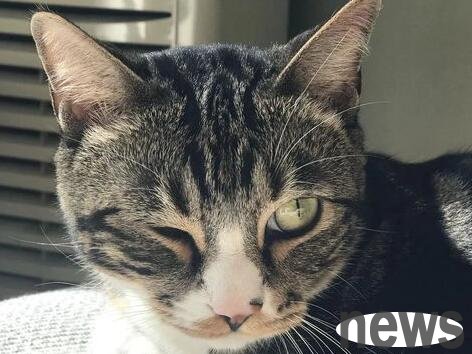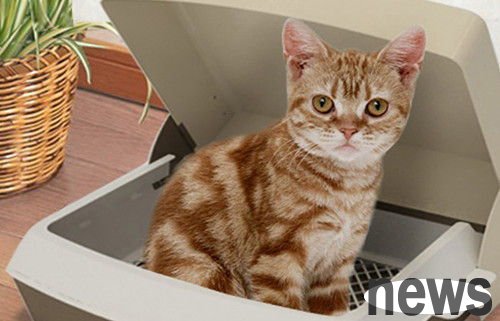As a domestic pet, cats are highly independent and convenient for care, and have been raised more and more in recent years. While domestic cats bring happiness to people, their abnormal urination behavior is increasingly manifesting, causing great trouble to the owners. For us pet doctors, there are many factors that have abnormal urination in cats. In addition to pathological factors, urination caused by abnormal behavior has also been increasingly confirmed, which also poses great challenges to our doctors' clear diagnosis.
1. Abnormal urination. Changes in urination frequency, urgency, quantity, location, etc. in animals can be called abnormal urination.
1. Causes
The causes of abnormal urination are usually divided into urinary tract pathological factors and non-urinary tract pathological factors. Among the urinary tract pathological factors, common causes include urinary stones, urinary tract infections, spontaneous cystitis, urinary tract tumors, ureteral abnormalities, changes in urethral neuromuscular control, etc. Among the non-urinary tract pathological factors, the most important are estrus behavior changes and behavioral abnormalities, such as psychological diseases.

2. Clinical symptoms
Sick animals usually show two types of symptoms: one is painful urination, such as frequent urination, acute urination, hematuria, drip urine, urinary urinary urinary urinary urinary retention, spontaneous cystitis, bacterial infection of urinary tract, urinary tract tumors, etc., all show such symptoms; the other is no obvious painful urination state, which is only manifested as a change in the urinary location, and the urine volume and color of urine have already urinary urgency, or some animals will experience urinary incontinence or urinary retention, while estrus, abnormal behavior, spontaneous cystitis, ureteral ectopic, and changes in neuromuscular control have not caused painful urination.
3. In cases of abnormal urination, ultrasound examinations, X-rays, urine analysis, hematology examinations and complete neurological examinations can be used to clarify the cause of abnormal urination. In addition, some special examinations may be required, such as urography, etc., to determine special diseases such as ureteral ectopicity.
The relevant information of comprehensive consultation and laboratory tests can be relatively clear about the causes of diagnosis, including urinary stones, urinary bacterial infections, estrus, tumors and ureteral ectopicity; while some spontaneous cystitis, behavioral abnormalities, and neurological abnormalities are not easy to diagnose clearly.
2. Disease statistics
The authors counted 95 cats who came to the hospital for treatment in the past four years from 2009 to 2013. The cause, gender and prognosis of their causes, gender and prognosis were calculated according to the analysis model of kanger et al., as shown in Table 1.
In the above statistics, we found that urinary stones and spontaneous cystitis were the main causes, accounting for 53% (40/95) and 37% (28/95), respectively, but no cases of ureteral abnormalities and changes in urethral neuromuscular control may be related to incomplete examination technology. Among all the statistical cases, except for one case of urethral tumor, the other prognosis was relatively good, and the cure rate was greater than 80%. In the above table, the incidence rate of male animals is 71% (67/95), while the proportion of female animals is 29% (28/95).
III. Discussion
In the statistical results, we found that the incidence of male animals was significantly higher than that of female animals, which may be related to the urethral structure of male cats. Male cats have longer urethra than females and smaller diameters, making them more likely to have urethral obstruction. In addition, in some cases, cats' continuous penis licking can lead to mucosal damage and bleeding, which can also aggravate the clinical symptoms of abnormal urination. Therefore, males are more common in cats with various forms of diseases such as urethra infection, obstruction, inflammation, etc.
In four statistical reports by Kruger et al., the highest proportion of spontaneous transient deinflammatory in cats was about 55%-69% of cases of abnormal urination, followed by urolithiasis, about 13%-28%; while statistics from our hospital showed that the highest proportion of urilitis in cats was about 53% of cases of treatment, and the proportion of spontaneous cystitis was about 37%. Cats with urolithiasis usually have symptoms such as hematuria and urgency to urinate, which is easy for the owner to pay attention to. This is likely to be the reason why urolithiasis cats account for a high proportion of abnormal urination cases in our hospital.
There are few reports of estrus disease in foreign data, which may be related to early sterilization. Among the case statistics in our hospital, about 18.9% of cases caused by estrus caused abnormal urination (18/95). Through disease consultation, we found that a large number of cats have symptoms of non-pain abnormalities such as changes in urination location, which do not manifest as changes in urine volume and urination status, so they are valued by animal owners. Therefore, more detailed consultations and examinations can help diagnose such diseases.
A large amount of consultation information is required, meticulous scientific examinations and corresponding laboratory examinations are required to rule out the existence of other disease factors. Such abnormal behaviors in cats usually occur due to anxiety, depression and even fear, which is generally related to the stimulation of cats by changes in the environment.
In addition to conventional treatment, tricyclic antidepressants such as amitriptyline, clomipermin, etc. may also be required for treatment plans for behavioral urination abnormalities. Among the five cats diagnosed with behavioral abnormalities in our hospital, mirtazapine was taken orally at a dose of 1 mg/kg, and the owner was asked to improve some behaviors that may cause anxiety and fear in the cat. The symptoms of four cats disappeared after two weeks of visiting the hospital.
Merzapine is a new type of norepinephrine and specific serotonergic antidepressant. Zhu Jianzhong, Wang Jinliang and others reported the therapeutic advantages of mirtazapine in human depression. It has good antidepressant and anti-anxiety effects. The adverse reactions are significantly lower than those of traditional antidepressants. The main manifestation is that it increases appetite and takes effect faster. The use of mirtazapine has achieved good therapeutic effects in the treatment of our hospital, and the cure rate has reached 80% (4/5).
Urgent urinary abnormalities need to be dealt with in a timely manner. Among the 40 urolithic cats counted, 25 showed symptoms of urinary atresia, 17 cases showed elevated blood potassium, and even 5 cases had elevated blood potassium to 8.0mm01/1 or more.. Among the cases treated, one case had symptoms such as quadriplegia and mild coma just 3 minutes after the start of the treatment. Therefore, it is crucial for cases of urinary atresia to control crises such as hyperkalemia and other diseases in a timely manner.
